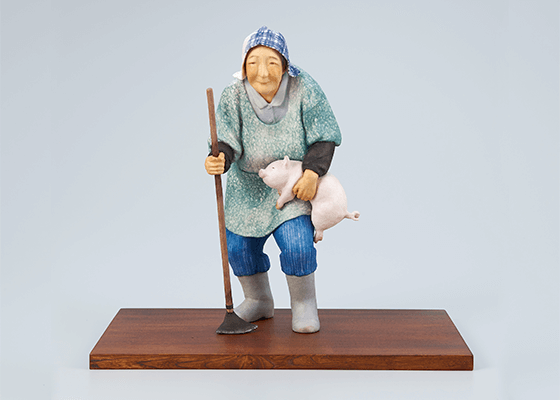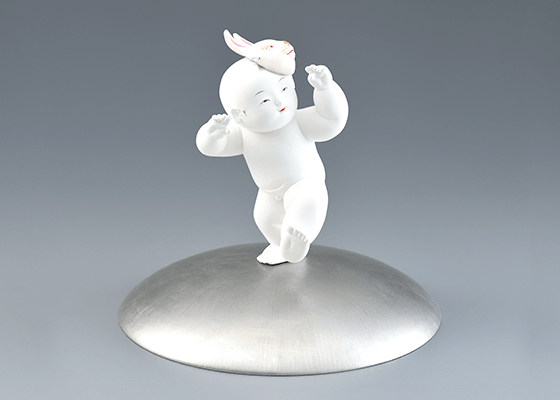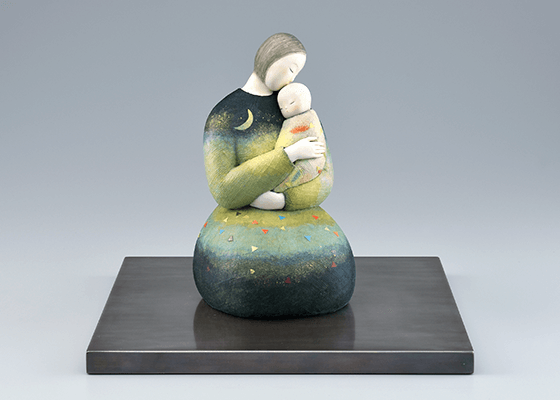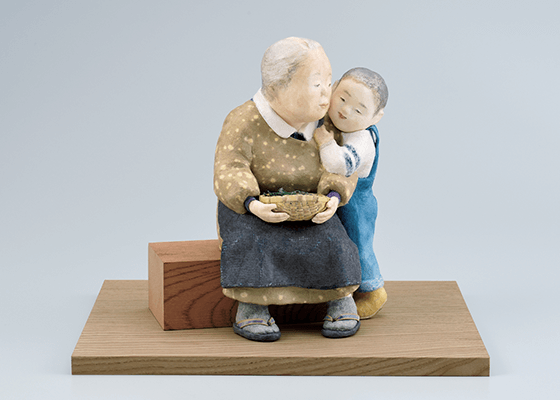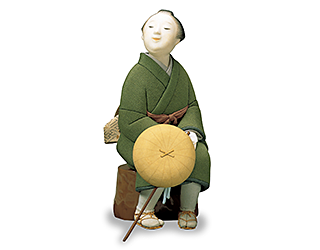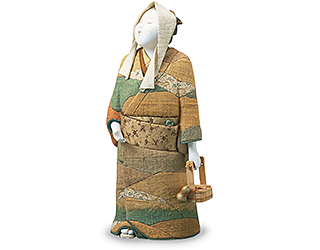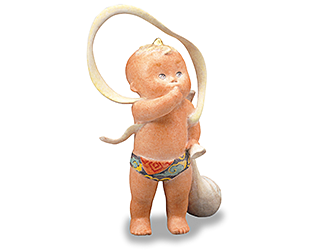Description
In Japan, the history of dolls (ningyō) traces back to the dogū figures of the Jomon period (10,500 BCE–300 BCE) and the haniwa figures of the Kofun period (300 CE–538 CE). Since then, a variety of unique doll-making traditions have developed in regions throughout Japan.
Doll making consists of the creation of the base form, the dressing of the doll, and the decoration of the face. The body of the doll may be made using various materials such as solid paulownia wood, a modeling compound called tōso that consists of paulownia sawdust and paste, layers of washi paper, or pottery clay. Once the body is complete, the doll is coated with a white paint of pulverized shells called gofun. The doll is then dressed in fabric or paper and colored.
Process
-
1 Materials are selected
-
2-1 The doll is carved from wood
-
2-2 The doll is made from wood clay (tōso)
-
2-3 The doll is made from layers of washi paper
-
2-4 The doll is made from clay and fired
-
3 The doll is dressed, and finishing touches are applied
Artistic Techniques
-
Wooden dolls
Carved wooden dolls (mokuchō ningyō) are made by separately carving the head, torso, and limbs out of paulownia wood. The limbs are then assembled using bamboo pegs. Paulownia has a low sap content, making it less likely to attract insects. It is also lightweight, strong, and does not warp easily, making it an ideal material for doll making.
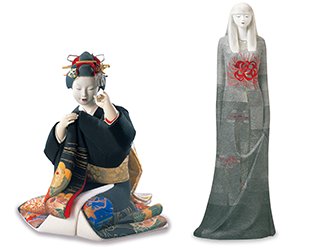
-
Tōso dolls
Tōso dolls (tōso ningyō) are made of a modeling compound called tōso (a mixture of paulownia sawdust and paste) attached to a core of solid paulownia. Tōso can be freely fashioned while soft to produce all manner of forms. The molded forms are thoroughly dried before use to ensure that they won’t warp.
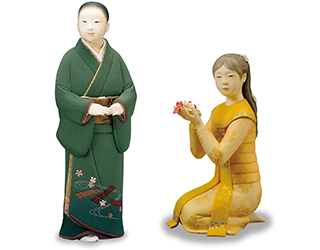
-
Papier-mâché dolls
Papier-mâché dolls (harinuki ningyō) are made using one of two methods. The first method, known as uchibari (“inner pasting”), is done by taking a plaster mold of a clay form. Washi paper is then built up on the inside of the mold to create the body of the doll. Once dry, the doll is removed from the mold, and the shape is touched up with tōso (a modeling compound made of paulownia sawdust and paste). The surface of the doll is coated with a white paint of pulverized shells called gofun and further decorated with colored paint and pieces of fabric or washi paper. For the second method, known as sotobari (“outer pasting”), layers of paper are added to a wooden form to create the doll.
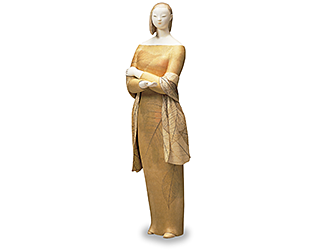
-
Ceramic dolls
Ceramic dolls (tōtai ningyō) are made of fired clay. First, the body of the doll is made from clay. Next, the clay form is halved and hollowed out, leaving behind an exterior of about one centimeter thick. The two halves are put back together, smoothed, thoroughly dried, and then fired in a kiln. Some ceramic dolls are bisque fired and then painted or embellished before undergoing a second firing at a higher temperature. If a plaster mold is taken from the form, it can be used to create more dolls in the same shape.
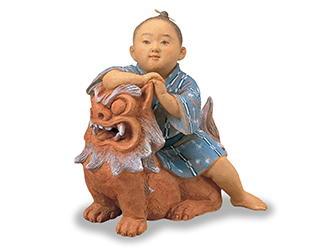
Decorative techniques
-
Nunobari
“Pasted fabric.” Designs are created by applying different colored fabrics.

-
Kimekomi
Fabric is tightly tucked into narrow grooves on the doll’s torso. The grooves are cut to align with the seams of the outfit and an adhesive is applied to secure the fabric in place. In addition to securing the outfit, kimekomi is used to create subtle details on the final outfit.

-
Hamekomi
Templates made of washi paper are wrapped in fabric to create parts that are stuck together.

-
Kamibari
“Pasted paper.” Designs are created by applying dyed washi paper.

-
Saishiki
“Coloring.” Paint is applied directly to the body of the doll.

-
Saichō
“Color carving.” Colored paints are mixed into gofun (a white paint of pulverized shells) and applied to the surface of the doll to create layers of color. The surface is then carved to create designs by exposing the colors underneath.

- Reference: Nihon Kōgeikai Higashi Nihon Shibu (Japan Kōgei Association Eastern Branch), ed., Dentō kōgei-tte nani? – miru, shiru, tanoshimu gaido bukku (What Are Traditional Crafts? –A Guidebook to Seeing, Learning, and Enjoying). Unsodo, 2013.REFERENCE ARTWORKS


